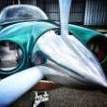231 crash on takeoff at 47N
-
Members Online
- raymondscott0321
- Lumberg
- kortopates
- ericrynehess
- MDMooney
- eman1200
- 00-Negative
- DanM20C
- vik
- ferlores
- Kelpro999
- Schinderhannes
- Gilt
- ToddCC22
- haymak3r
- Rwsavory
- slowflyin
- exM20K
- Raistlin
- Al Matt
- Skyland
- TCC
- Paul Thomas
- Don Gates
- midlifeflyer
- N204TA
- prillayo03
- Hank
- 1980Mooney
- turbofan
- Fritz1
- Trogdor
- wombat
- Blaze
- Jetdriver
- M20F
- varlajo
- catchman86
- Oscar Avalle
- Greg Ellis


Recommended Posts
Join the conversation
You can post now and register later. If you have an account, sign in now to post with your account.